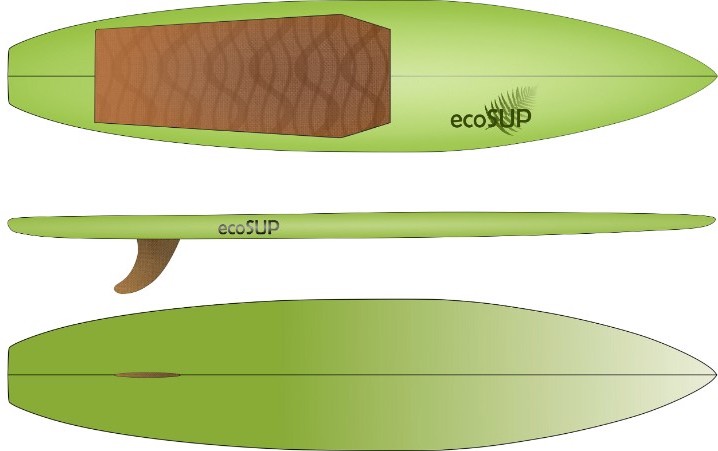Although stand-up paddleboards are very eco-friendly to use, they’re typically made of not-so-green substances. German scientists are trying to change that, with a board made entirely of sustainable materials – obtained partially from old wind turbine blades.
Ordinarily, stand-up paddleboards consist of a petroleum-based polystyrene foam core, surrounded by a composite shell containing non-renewable materials such as epoxy resin, polyester resin or polyurethane. Typically, it is quite difficult to separate such substances from one another for recycling.
Led by Christoph Pöhler, scientists at the Fraunhofer Institute for Wood Research have teamed up with colleagues from the Technische Universität Braunschweig to create a more environmentally friendly alternative.

Fraunhofer WKI
At the heart of the new board is a lightweight foam made of balsa wood harvested from the cores of discarded wind turbine blades. After a hammer mill is used to separate chunks of the wood from the blades’ surrounding glass-fiber reinforced plastic shell, that wood is finely ground, mixed with water to form “a kind of cake batter,” then processed into a firm yet lightweight foam that holds together without the need for any added adhesives.
Hand lay-up and vacuum infusion processes are then used to sandwich that core inside a rigid watertight shell, which is made of woven flax fibers combined with a completely bio-based polymer.
It is hoped that a finished board will be ready for demonstration by the end of next year. If the technology proves successful, it could conceivably also make its way into the construction of things like buildings, ships and automobiles.
As an interesting side note, Global Surf Industries already incorporates waste coconut husk fibers into its paddleboards and surfboards, the result being that less epoxy resin is required in their fabrication.
Source: Fraunhofer
Source of Article